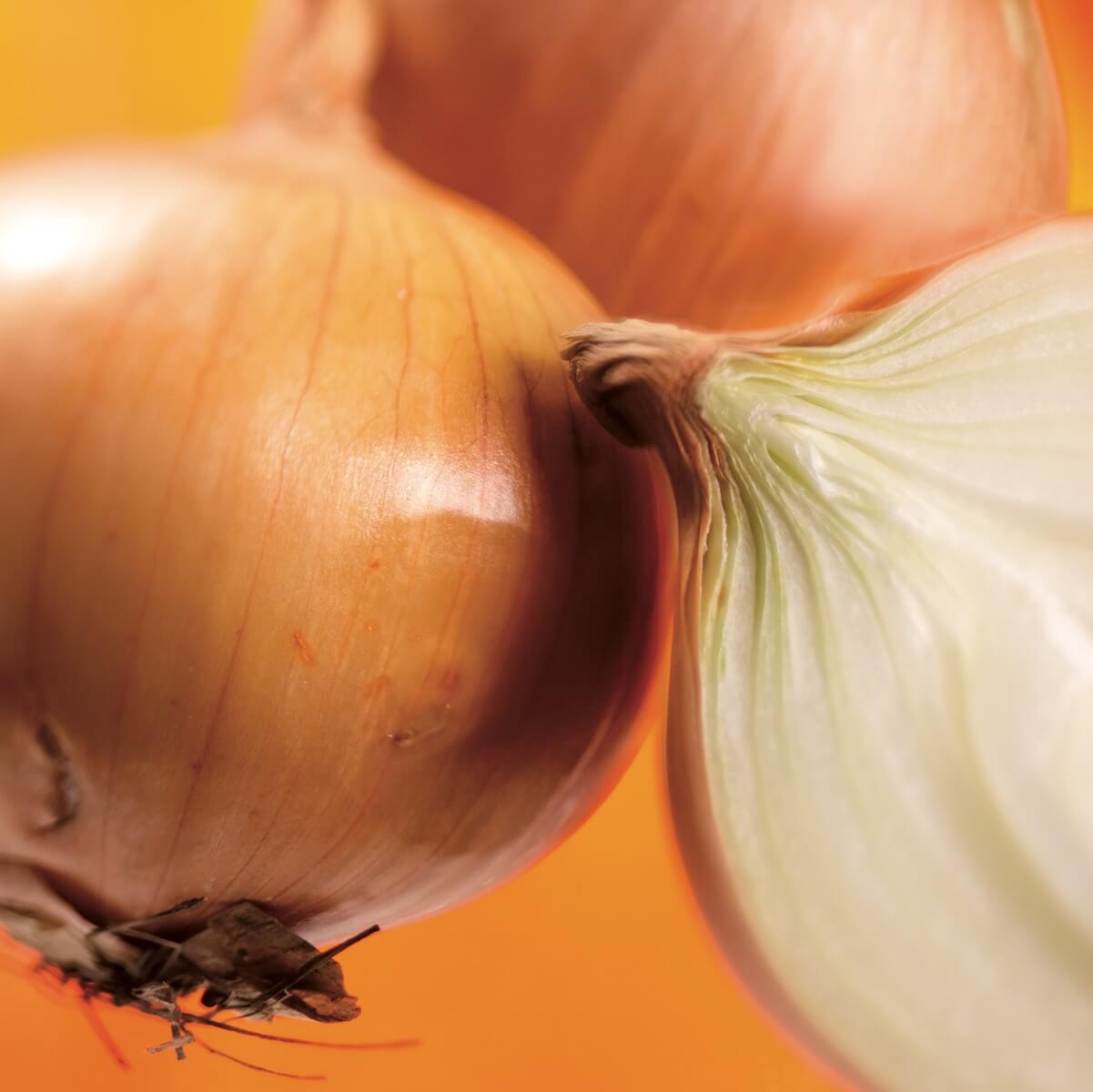synonyms: botanical family: origin: Classification: spice shape: odour: use: When chopped, onions irritate the eyes to tears, smell acrid and typically taste more or less hot, depending on the type. Raw or prepared in the kitchen, they are one of the most frequently used spices and are used in a wide variety of ways in salads, soups, meat dishes, fish stock, marinades, sauces, vegetables, egg dishes and many other dishes. Large tubers are often eaten as vegetables. tip: Recipe suggestion: knowledge: botany: home & spread: cultivation & extraction: History: Onion
General information
Use
Things to know
 Botanical name:
Botanical name:
Allium cepa L.
synonyms
leek plants
i.B. Asia
Spice
onion
pungent, irritating to tears
Meat, fish, vegetable and potato dishes, salads, soups, sauces, onion tart, onion bread etc.
Store in a cool and dry place. Spring onions are intended for early consumption
Onion soup: Cut 6 vegetable onions into thin rings. Heat 70 g butter and stir-fry the onions, add pepper and 1 1/2 l beef stock or stock. Simmer gently for about 10 minutes. Drain 30 g butter and fry 2 slices of toast cut into pieces until golden brown. Finally add 3 glasses of white wine to the soup and season again. Pour into soup bowls, place bread cubes on top and sprinkle with grated cheese.
Cuisine: Onion juice is also suitable for tenderising meat. Tough meat is marinated with it and left to stand overnight. The same applies to spit-roast, where whole, raw onions can be wrapped (resting time at least 12 hours).
The herbaceous, biennial cultivated plants from the lily family have developed from an earlier stem form whose appearance is no longer known today. Through careful selection, numerous varieties have developed over the centuries, which can be distinguished mainly by the shape of their tubers (spherical, flattened, oblong, pear-shaped), the colour of the outer tuber skins (white, yellow, pink, purple) and the size of the tuber (20 to 100 mm in diameter). The tuber serves the plant as a food store. It consists on the outside of dry-skinned, coloured skins and on the inside of tube-closed, fleshy, thickened leaves, which sprout from the rooted onion disc at the bottom of the tuber. From the leaf axils of the former stem leaves, new leaves and the high, thickened central flower stalk push out from the inside of the tuber from the onion disc during the growth phase. At its tip it carries the spherical, whitish to pinkish-purple flower umbel composed of numerous individual flowers.
The now unknown wild form of the kitchen onion most probably originates from Central Asia. Its descendants, bred over centuries, have spread with man all over the world.
Every garden has its own bulb bed for daily use, but bulbs are mainly grown in large quantities in fields. They are usually grown from onion seeds, less often than breeding bulbs. The longer and warmer the days are, the faster the bulbs grow. A field with an area of about 4000 square metres will, under favourable conditions, ripen 4 to 12 tonnes of onion tubers, depending on the species grown. The tubers are usually brought to market fresh. In addition, there are manufacturers who sell onion products dehydrated by dehydration in the form of onion slices, onion granules, onion powder, etc. Roasted dehydrated onions are also available.
Onions have been cultivated since time immemorial. Coming from Central Asia, the spicy tubers were known to all former cultivated peoples of Asia Minor and Africa long before the reckoning of time. Onions grew in Egypt and were considered sacred in the time of the great pharaohs. The Romans already knew many different varieties. With the Roman legions, onions came over the Alps, where the spicy tubers were still regarded with some reservations, even in the Middle Ages. It was only gradually that onions began to enjoy great popularity here too. The Spaniards ensured its further spread to America. With the English the onion came to Australia.
http://de.wikipedia.org/wiki/Zwiebel







